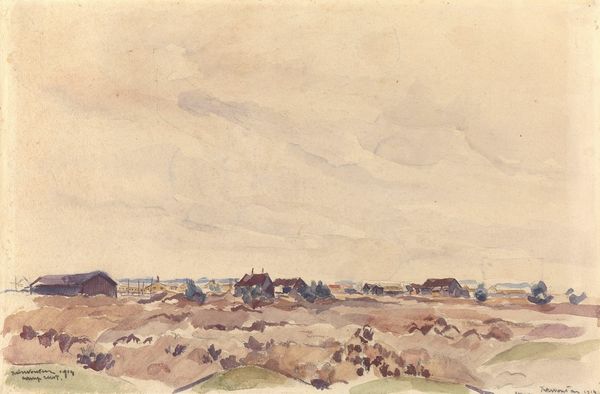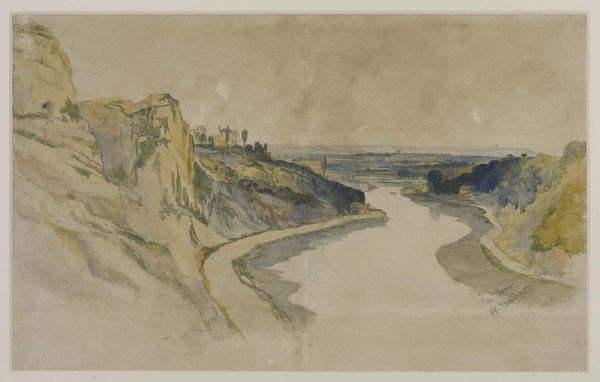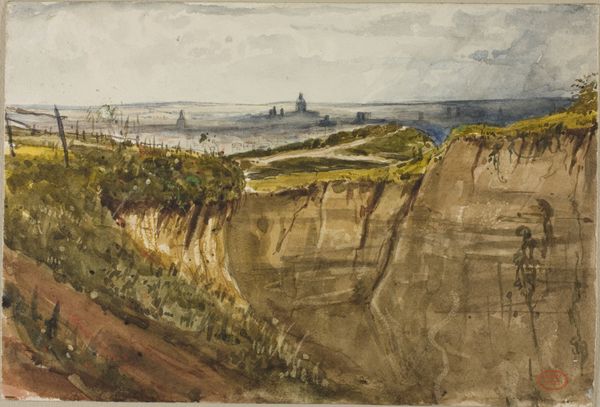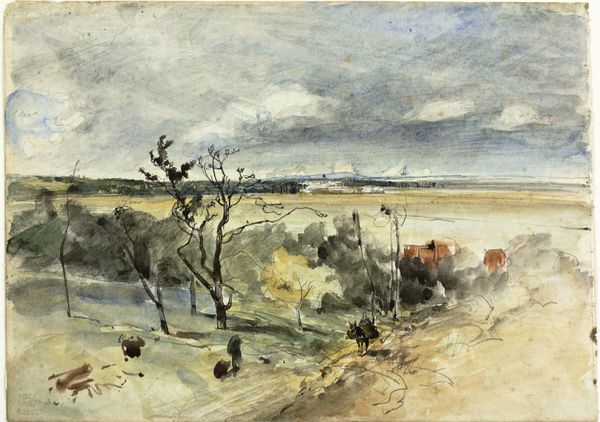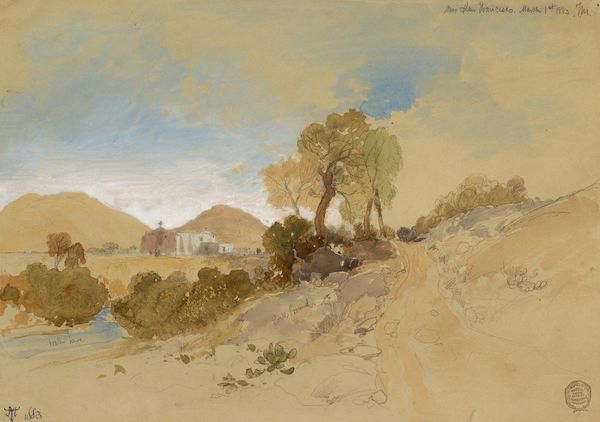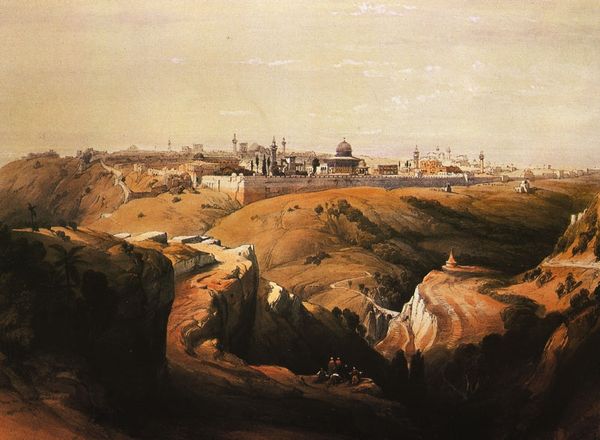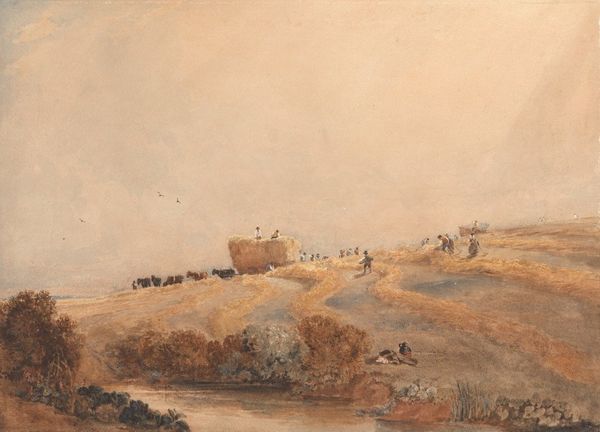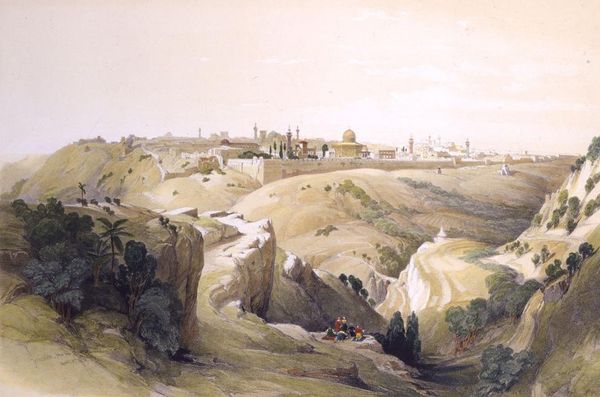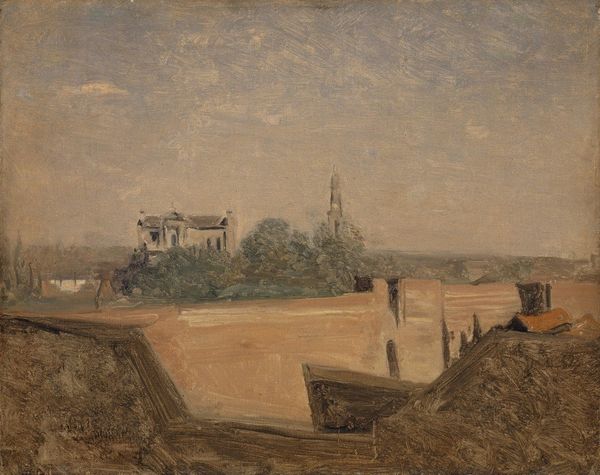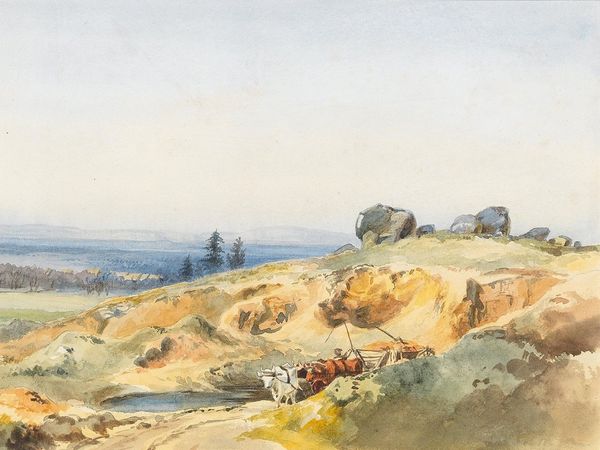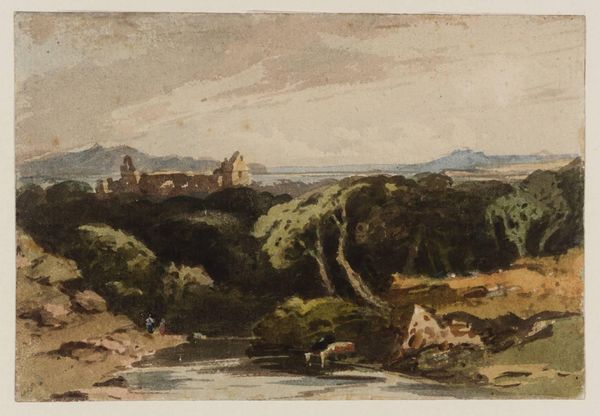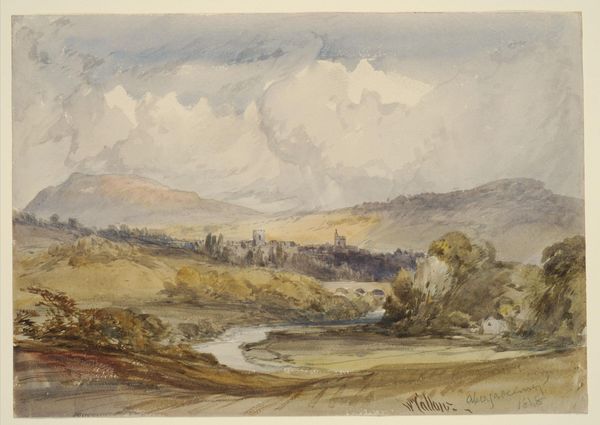
Dimensions: support: 267 x 489 mm
Copyright: CC-BY-NC-ND 4.0 DEED, Photo: Tate
Editor: Here we have Edward Lear’s watercolor, "Galera." The lines seem so free, almost hurried. The architecture in the background gives the impression of being old and abandoned. What do you see in this piece? Curator: The interplay of line and wash creates a palpable sense of depth, doesn't it? Note how the artist uses hatching and cross-hatching in the foreground to build up shadow and volume, contrasting with the lighter washes in the distance. The architectural forms are delineated with precise lines, suggesting a careful observation of structural detail. Editor: So, the contrast between the detailed architecture and the sketchier foreground is intentional? Curator: Precisely. It directs the viewer’s eye. This contrast invites a semiotic reading, with the detailed structures representing permanence and the fluid washes suggesting the passage of time. Editor: I see, so the formal elements speak to the artwork's themes. Thank you! Curator: Indeed. The materiality and form are integral to the reading of Lear's work.
Comments
Join the conversation
Join millions of artists and users on Artera today and experience the ultimate creative platform.
tate 6 months ago
⋮
Lear produced compositions of striking simplicity and originality, from an astonishing range of places. He would begin with drawings made on the spot, which he would ‘pen-out’ in the studio and then add broad colour washes. These provided the material for the saleable finished works he exhibited back home. His first book, published in 1846, was an account of his travels in Italy. These Illustrated Excursions in Italy unexpectedly resulted in an invitation from Queen Victoria, then twenty-seven years old, to give her lessons in drawing. Gallery label, September 2004
